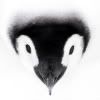
Domed Dinosaur Was King of the Head Butt
ScienceDaily (June 29, 2011) — Llamas can't really manage it. Giraffes aren't very good at it and while big horn sheep and muskox excel at it, it turns out a small plant eating dinosaur -- the pachycephalosaur Stegoceras validum -- was probably even better at it: head butting.
Researchers surveyed the heads of a large number of modern animals as well as one of the world's best dinosaur fossils, the Stegoceras specimen from the University of Alberta. They found that the bony anatomy of some pachycephalosaur domes are better at protecting the brain than in any modern head butter. The results of their research is published in PLoS ONE.
"Pachycephalosaur domes are weird structures not exactly like anything in modern animals. We wanted to test the controversial idea that the domes were good for head butting," says co-author Dr. Eric Snively, University of Calgary alumnus and post-doctoral researcher in biomedical engineering at Ohio University.
"Finding out brings us closer to their social lives: were pachycephalosaurs more likely just showing off their domes like peacocks with their tails, or were they also cracking their heads together like musk oxen?"
Using CT scanning and a new statistical method for diagnosing behavior in fossil animals, the researchers compared the bony-headed dinosaur with modern ungulates (hoofed animals) that engage in different kinds of combat.
"Our analyses are the closest we can get to observing their behavior. In a way, we can get "inside their heads" by colliding them together virtually. We combined anatomical and engineering analyses of all these animals for a pretty thorough approach," says Snively. "We looked at the actual tissue types in the skulls and heads of the animals."
Head butting is a form of male-to-male competition for access to females, says Dr. Jessica Theodor, co-author and associate professor in the biological sciences department at the University of Calgary. "It's pretty clear that although the bones are arranged differently in the Stegoceras, it could easily withstand the kinds of forces that have been measured for the living animals that engage in head butting."
Most head-butting animals have domes like a good motorcycle helmet. "They have a stiff rind on the outside with a sort of a spongy energy absorbing material just beneath it and then a stiff, really dense coat over the brain," says Snively. The Stegoceras had an extra layer of dense bone in the middle. Stegoceras was a small pachycephalosaur about the size of a German shepherd, and lived about 72 million years ago.
Llamas would crack their skulls head butting and giraffes aren't very good at it. "They swing their necks at each other and try to hit each other in the neck or the side," says Snively. If giraffes do manage to butt heads, they can knock each other out because "Their anatomy isn't built to absorb the collision as well as something like muskox or big horn sheep."
Story Source:The above story is reprinted (with editorial adaptations by ScienceDaily staff) from materials provided by University of Calgary.
Journal Reference:
- Eric Snively, Jessica M. Theodor. Common Functional Correlates of Head-Strike Behavior in the Pachycephalosaur Stegoceras validum (Ornithischia, Dinosauria) and Combative Artiodactyls. PLoS ONE, 2011; 6 (6): e21422 DOI: 10.1371/journal.pone.0021422
--
Got Penguins?
Penguin News Today
The Science of Penguins
Gentoo Penguins of Gars O'Higgins Station, Antarctica

Wolves & Werewolves/Science, Myth & News
http://canislupus101.blogspot.com/
http://dances-with-werewolves.blogspot.com/
http://throughgoldeneyes.blogspot.com/
__._,_.___
No comments:
Post a Comment